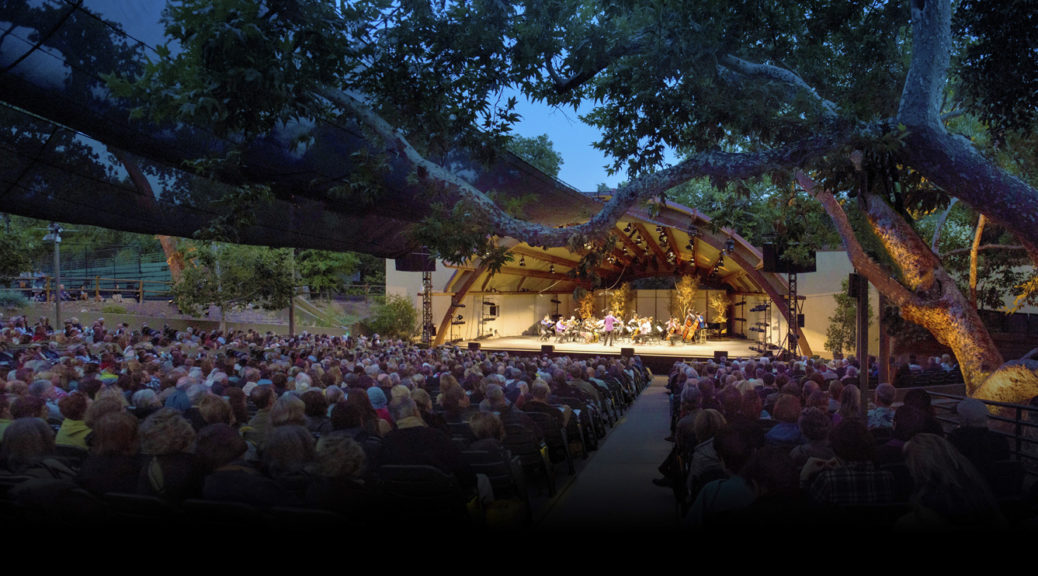
WOMEN AT THE FOREFRONT
Ojai Fest Is the Latest Spotlighting Their Creativity
By Paul Hertelendy
artssf.com, the independent observer of San Francisco Bay Area music and dance
Week of June 17-24, 2016
Vol. 18, No. 73
BERKELEY—Is this the year of the woman in serious music?
The entire Ojai Music Festival program this year is dominated by women’s creativity, inclluding the major opus, Kaija Saariaho’s “The Passion of Simone.” Joana Carneiro will be one of the rare woman conductors at the San Francisco Symphony next season, Saariaho’s “L’amour de loin” is announced for the Metropolitan Opera, and the newest Pulitzer-Prize-winning composer is Caroline Shaw, a graduate student at Princeton. Marin Alsop meanwhile triumphs on podia on both coasts, completing her 27th year heading the nearby Cabrillo Music Festival.
The innovative northern outpost of the Ojai Festival got off to a ringing start this month with the rare phenomenon of a lobbyful of attendees animatedly staying after opening night, quite spontaneously, to discuss the concert experience.
This reaction emanated from the 21st-century monodrama music-theater piece, “The Passion of Simone” by Kaija Saariaho. The highly esteemed Finnish composer in Paris, Saariaho, 63, is a subtle colorist whose mildly dissonant, enigmatic orchestrations keep you transfixed, grown out of the nebulous environments of Debussy, “Pierrot Lunaire” and early Stravinsky, almost devoid of brass. Instead of highlighting melodies, her scores are textures and effects, constantly shifting like the sunset light, sparkling like vintage champagne. Virtually all of the 20 orchestra members have separate parts to play.
Elusive content wrapped in a paradox? Yes, much like Heisenberg’s Uncertainty Principle in physics, which says you can examine and absorb but cannot fully put your finger on it.
Saariaho’s “Passion” is a nebulous poetic allusion and reflection on Simone Weil (1909-43), a French writer, political activist, factory worker, humanist, mystic and patriot. The work also draws parallels of Weil (who was at various times an agnostic, a Jew, and a Catholic devotee) to Jesus Christ, referring to the 14 Stations of the Cross. The texts, delivered by a “sister” in song and word, reflect great compassion toward Ms. Weil in reference to this “fragile flame,” one that was largely overlooked until the posthumous publication of her writings.
The piece is built around an actress/narrator/mezzo singer interacting with the orchestra, with occasional interjection by a four-member Greek chorus. Even though her French diction was imperfect, singer Julia Pollock was impressive on a stage with its shifting colored lights, whether standing, emoting or just supine.
Directed by Peter Sellars, who is overall head of music for the 2016 Ojai Music Festival, “Simone” featured the crack New York-based ICE ensemble under the baton of Joana Carneiro, best known around here as music director of the Berkeley Symphony. She shaped the music adroitly and cued components carefully in her model appearance.
The disappointment was the brevity of the 75-minute program, for which adding an ICE-only curtain-raiser would have been very welcome, especially since ICE is so rarely heard on the West Coast. (Footnote: ICE’s artistic director is also a woman, Claire Chase.)
The three touring Ojai programs which opened here June 16 conclude with Pollock returning for impressions of singer-dancer Josephine Baker, the alluring American expat who had been the toast of 1920s Paris.
Although given in the intimate confines of Zellerbach Playhouse on the university campus, “Passion” required using microphone amplification for the singers. Saariaho had originally taken up the project at the suggestion of the mercurial idea man Sellars.
Ojai Festival in Berkeley, June 16-18, Zellerbach Playhouse. Peter Sellars, music director. For info: (510) 642-9988, or go online.
©Paul Hertelendy 2016
#
Paul Hertelendy has been covering the dance and modern-music scene in the San Francisco Bay Area with relish — and a certain amount of salsa — for years.
These critiques appearing weekly (or sometimes semi-weekly, but never weakly) will focus on dance and new musical creativity in performance, with forays into books (by authors of the region), theater and recordings by local artists as well.
#